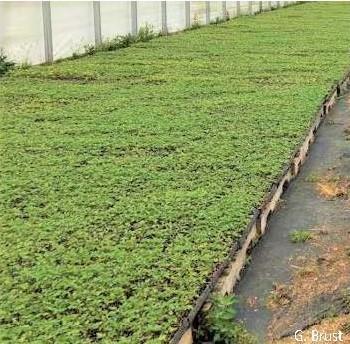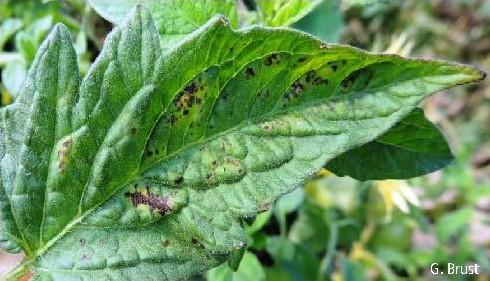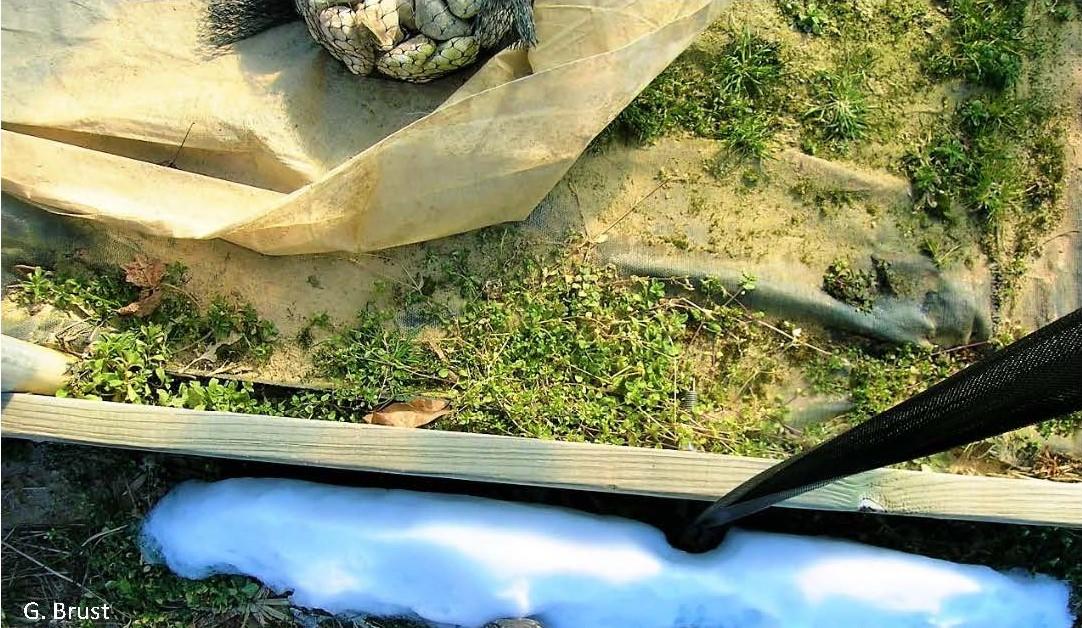Sanitation Important in Transplant Production Houses

By now almost all growers have started transplant production or have hired someone else to grow their transplants. With all of the important things that go into transplant production one of the sanitation factors that is somewhat neglected is weed control. Figure 1 shows the outside edge of a high tunnel production house in February. The grower was getting ready to drop seed in just a few days after they cleaned up the house from the fall growing season. This particular grower had been having intermittent problems with thrips (and consequently tomato spotted wilt virus) and two spotted spider mites in their production house. The chickweed you see on the outside and more on the inside at the base of the high tunnel was harboring a few thrips and a few mites. All the thrips and mite holdovers from the fall were female and would be ready to feed and lay eggs in the next week. The grower was cleaning up the weeds and debris from last fall five days before they were to start their seedling trays. This is not enough time to eliminate the pest problems that were on the overwintering weeds. Three and probably four weeks would have been much better to greatly reduce the mite and thrips populations. Not only can chickweed harbor these two major insect and mite pests, but the weed also can act as a host for tomato spotted wilt virus along with other weeds such as Canada thistle, ragweed, redroot pigweed, nightshade, chicory, yellow sweet and white clovers, phlox and many others. This makes it imperative that growers control their weeds weeks if not months before they drop seed for their vegetable or flower transplants. This includes controlling the weeds throughout the production period. Often times growers become very busy this time of season and neglect managing new weed problems as they arise (fig. 2). I know we are always asking you to control your weeds in your vegetable fields, which is a difficult thing to do, but it is much more manageable to control weeds in a high tunnel or greenhouse over a period of a few months.

Besides insects and viruses weeds also can harbor fungal and bacterial diseases. One of the worst diseases and one that is becoming much more of a consistent problem in our tomato fields is bacterial spot caused by four species of Xanthomonas (fig. 3). I think part of the reason bacterial spot has become such a problem is that it establishes itself in the field pretty early in the season. This may be due to several factors such as weeds in the field harboring bacterial spot disease, Xanthomonas strains with copper resistance and by transplants being infected. Transplants can become non symptomatic carriers of bacterial spot. Studies have found that a tray with one seedling that is infected can result in several plants in that tray and surrounding trays having Xanthomonas spp. bacteria on them but with no infection. It would be impossible to know which plants were carriers and which were not. Bacterial spot is so prolific a disease that one infected seed in 10,000 can start an epidemic in the field. To help reduce any chance of bacterial spot in your transplants, good sanitation practices need to be used in the production area and seeds should be hot-water treated, which will eliminate the bacteria from the surface of the seed and more importantly from within the seed.
